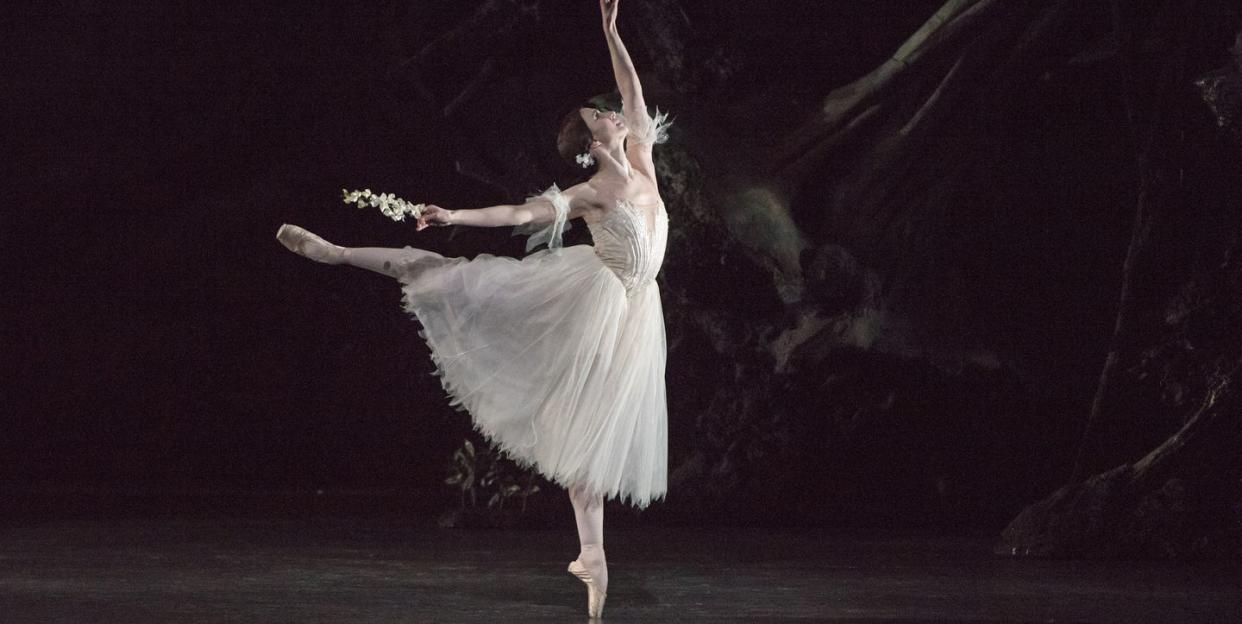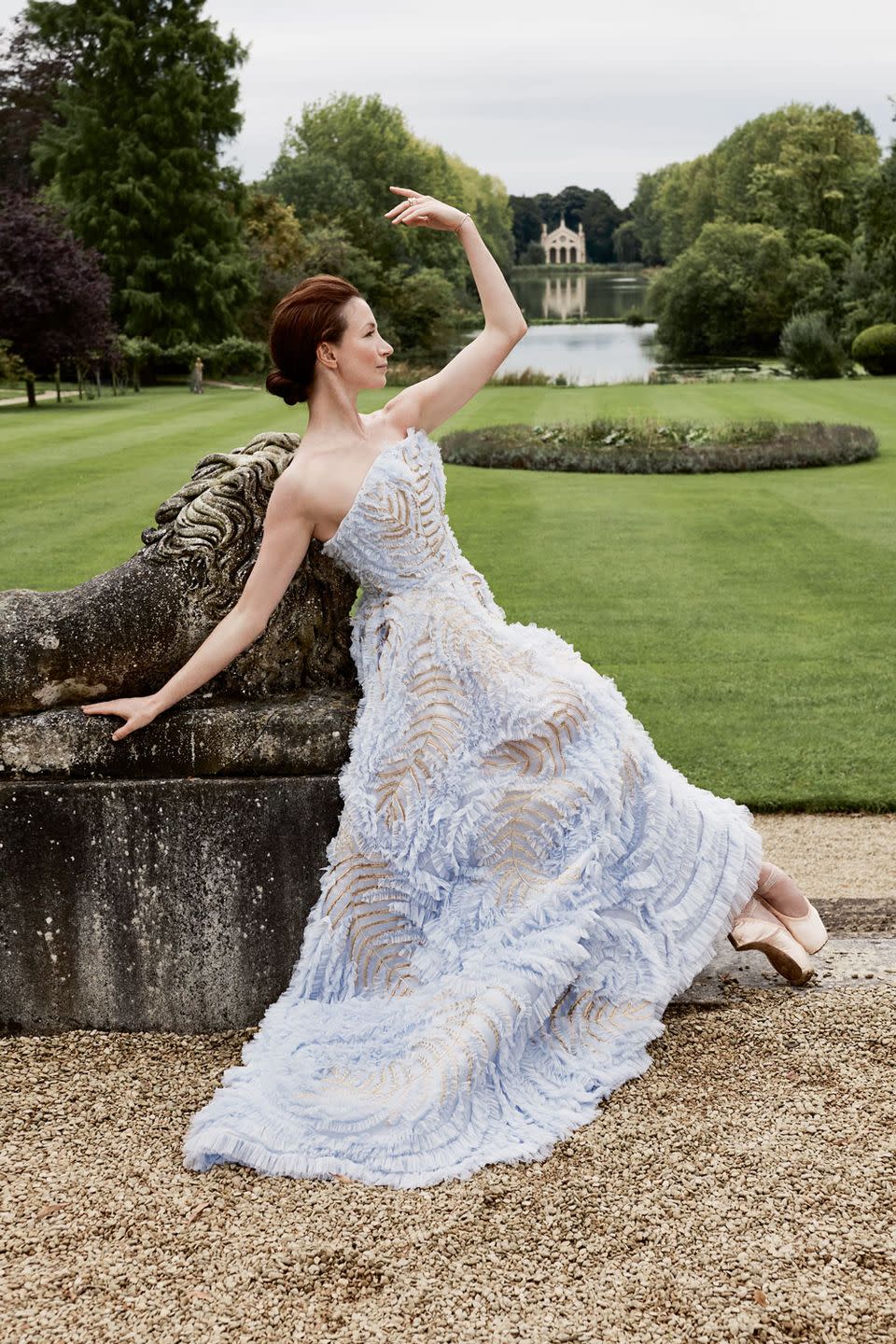How motherhood has changed Lauren Cuthbertson's approach to dance

“It got to a point where I just thought; that’s it, I surrender,” says Lauren Cuthbertson, throwing her hands up in mock defeat as she reminisces on the first stressful months of her pregnancy. “I felt like, OK, I give up dance. I just want a lovely, puffy baby."
The Royal Ballet principal is sitting before me, backstage at the Opera House, her legs stretched at impossible angles across the table and chair next to her. She has just come from a morning rehearsal for Giselle, the role that will officially mark her return to the stage after the birth of her first child, Peggy, in January. For – spoiler alert – Cuthbertson did not ‘surrender’ at all but is firmly back en pointe.
“It wasn’t that I wanted to give up ballet,” she stresses. “But pregnancy produced a very unusual reaction in me. For the first time in my life, I didn't feel like dancing, even for fun. In fact, I was filled with the very real fear of not wanting to dance again. Luckily, eight weeks after I had Peggy, it was like a spark inside me was lit and I knew I had to go back. I found the love of dance again.”

Cuthbertson’s ‘spark’ ignited a gruelling period of rehabilitation before she was ready to return. This was a thoroughly daunting prospect involving sweat suits, ankle weights, hydrotherapy, and intense body conditioning, all during a period when gyms had yet to re-open. “I found the core work incredibly challenging,” she remembers. “I could move my arms and I could move my legs but to move the whole body as one was impossible. It was like someone had just sort of sliced away the middle part of me.” “Well, they had,” I say, reminding her of her C Section. “Exactly!” she laughs.
Giselle – for which Cuthbertson will perform her opening night tonight – will mark the culmination of her months of arduous training. It may be a glorious return, but she stresses she is not the same. In fact, everything has changed.
“I am the same person and yet everything is different, and I don't know how to explain that,” she says. She describes how she finds herself lacking the perfectionism of her pre-motherhood self. She is not as judgemental about her own body, telling me that pregnancy has given her a sense of humility, turning the instrument of her craft into something else entirely. It was, she says, the ultimate ego check.
“One of the reasons I wanted children was because ballet is ego, it's all about you,” she explains. “Whether it's praise or criticism, whether it's me pushing myself, someone else pushing me, me looking at myself in the mirror, examining how I look, every photo, every video; how's my line, how's my turnout? I've been within a dance institution since I was eight years old. That's a long time to be focused on me. I was ready to give back.”
“It has made me a more relaxed dancer,” she continues. “I feel like I've got more clarity, despite needing three coffees before I'm ready to get going. I'm not so neurotic about myself anymore.”
Cuthbertson plans to bring this new mindset to Giselle, telling me she has tapped into unforeseen emotions during the rehearsal period. She is reluctant to ascribe her new emotional palette to motherhood, wary of being “one of those women who says they understand love now” but insists it has profoundly changed her emotive range. “Because it’s not just that overwhelming sort of love, being a mother, is it?” she says. “It’s exhaustion and struggle and pain and anxiety. That will all come with me on stage.”
Throughout her career, Cuthbertson has stepped into classic roles like Giselle, from the Sugar Plum Fairy in The Nutcracker to Odette/Odile in Swan Lake, but she is as noted for originating roles as inhabiting iconic ones. She created the part of Hermione in A Winter’s Tale and was the very first Alice in Christopher Wheeldon’s ballet production of Alice in Wonderland.

“The processes are very different for each – one’s a marathon and the other is a sprint – but they are both so rewarding,” she says. “Though creating a role is a long, exhausting process, it is so creatively rich. The same can be true for a classic part, too. People think these are ballets that belong in a museum; how could you possibly do them differently? But that’s just not true, they are forever evolving.”
One such case is Giselle itself. Cuthbertson has found herself re-addressing the famous ‘mad’ scene at the end of Act One. She wonders if, with our current insight into mental health, we should really be reframing that narrative: “What's 'going mad'? What does that mean? What does that mean today and how do you play that today? That's on my mind a lot at the moment, and I haven't quite figured out what that will be.”
Cuthbertson will be following Giselle with another classic role in The Nutcracker and originating new parts next year, creating a role in the Royal Ballet’s adaptation of Like Water for Chocolate in June. When I ask her what goals she has still to reach she says she feels “everything is a bonus right now”. “Maybe I will build back my ambition, but for now, it just feels like a new era I am happy to be in.”
I remind her of how hard-won her new era was, from painful body conditioning and ankle weights to battling fears of losing her life passion. “You’re right!” she laughs, “I am still ambitious!”

Lauren Cuthbertson performs in Giselle on 5 and 20 November and The Nutcracker on 4 and 10 December. For tickets, visit roh.org.uk.
You Might Also Like


